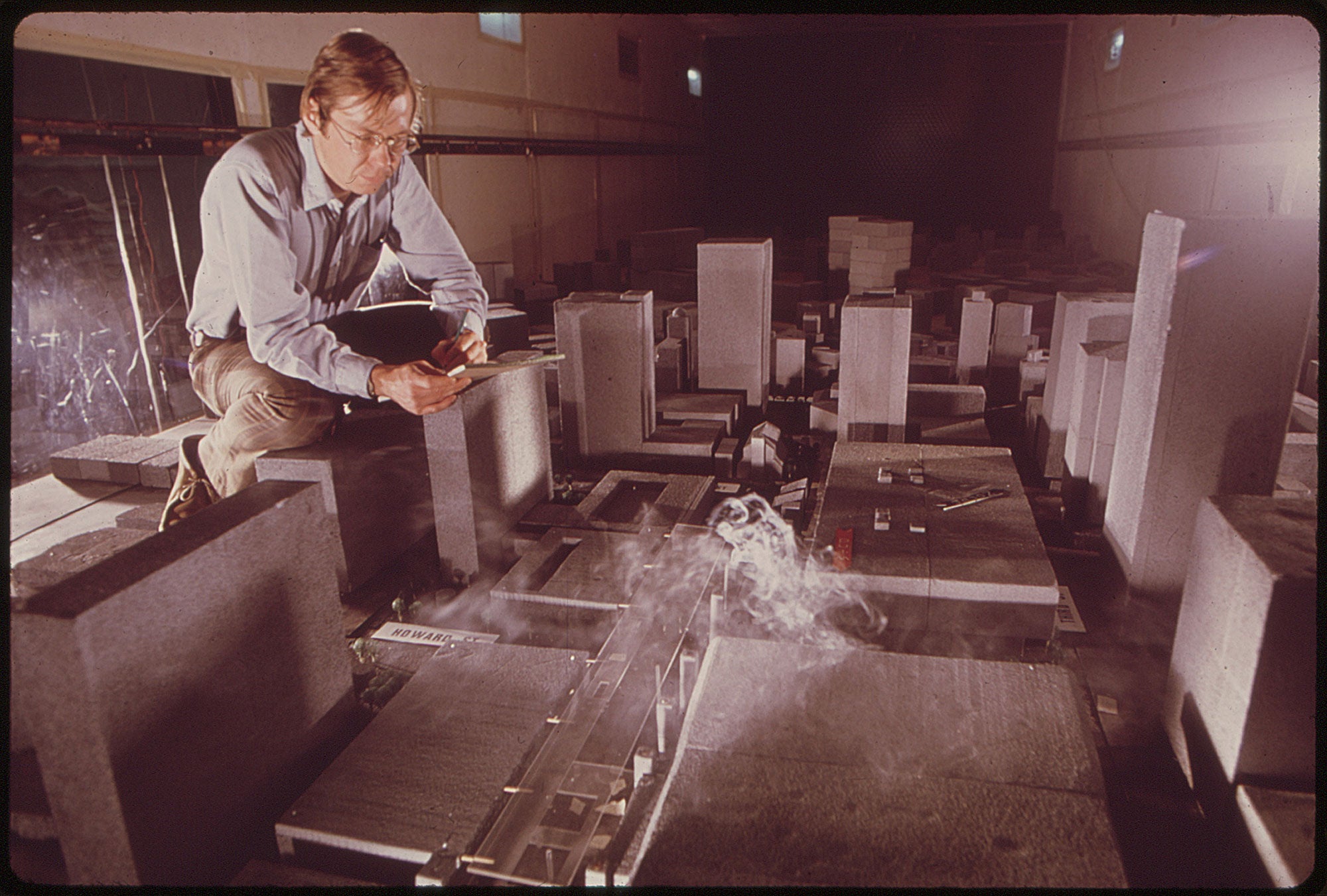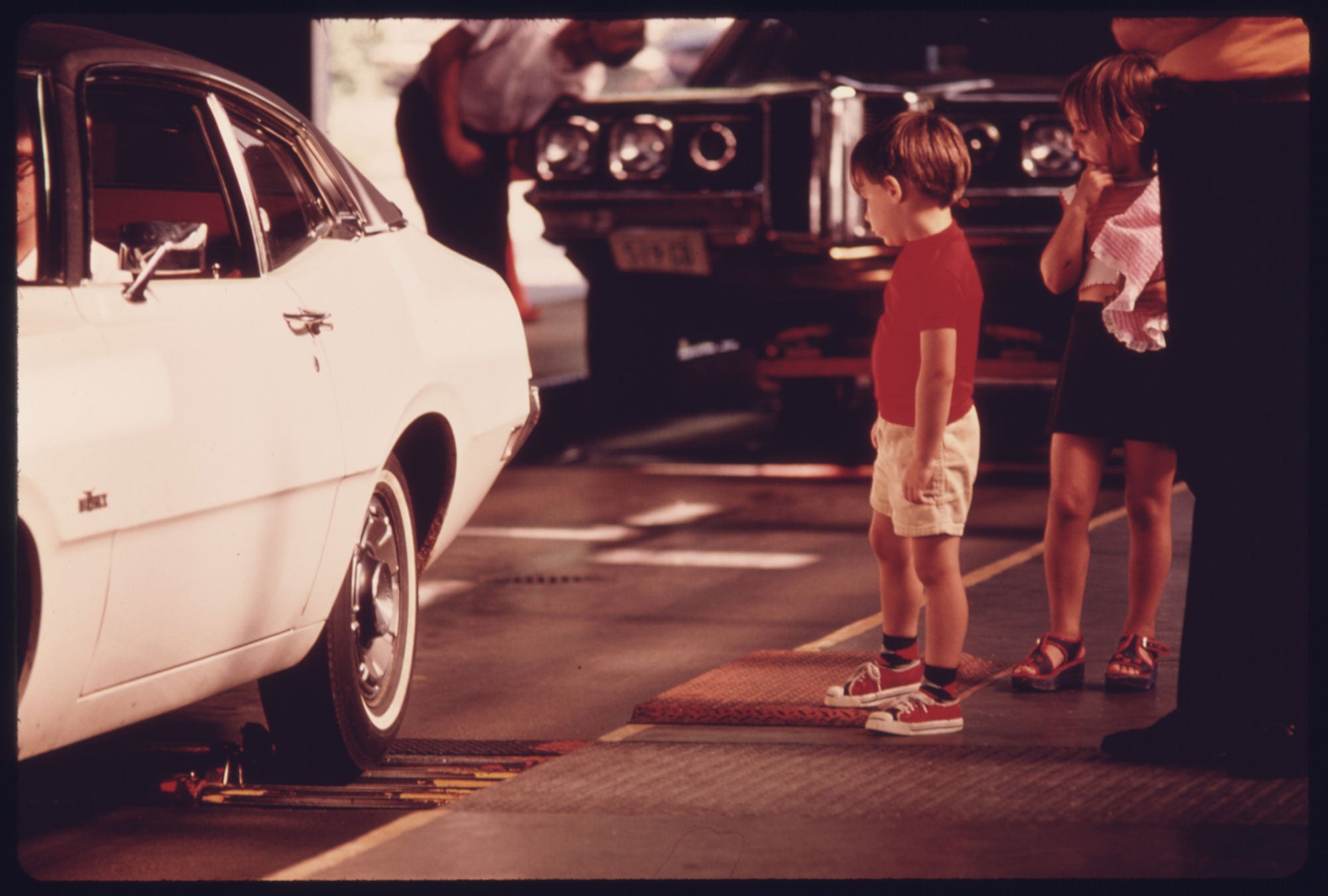May 27, 2020
The Trump Administration’s Hazy Plans to Weaken Car Pollution Standards Won’t Work. Here’s Why.
Earthjustice attorney Paul Cort explains why Trump’s EPA chief is careening way outside his lane in trying to undo a key provision of the 1970 landmark Clean Air Act.

On this page
*ID's added to sections for the scroll-to -- remember to update or remove
The future of the nation’s clean car protections is on the table, and Andrew Wheeler, head of the U.S. Environmental Protection Agency, is moving forward with a plan that will unleash tailpipe pollution across the country.
The Trump administration would rather force everyone to breathe the same higher levels of pollution. Who benefits? The oil industry. Who’s harmed? More than a hundred million Americans who live in states that set higher expectations for their air.
Fortunately, the law in this case is long established and sits squarely behind the people, not the polluters.
Representing Sierra Club, Earthjustice sued the EPA and National Highway Traffic Safety Administration in 2020 in separate lawsuits in the D.C. Court of Appeals for the illegal rollback of clean car and fuel economy standards. The Trump administration’s rule is based on massive technical and economic errors — and fails to meet core legal requirements.
The lawsuit followed legal action filed late the previous year challenging EPA's revocation of California’s waiver for its greenhouse gas emission standards for new motor vehicles, as well as the state’s zero emission vehicle standards.
The Trump administration’s plans are absurd, legally speaking.
The Clean Air Act of 1970 expressly gives California the authority to set emission standards for cars and trucks. The provision has been in place for nearly half a century.
Congress wrote these provisions into the law because California was already way ahead of the federal government in tackling smog. In fact, California's regulation of tailpipe emissions predates the creation of the U.S. EPA.
California passed the country’s first tailpipe regulations in 1966 in response to its notorious smog problems that at times cut visibility down to three city blocks in Los Angeles, soured the air with the smell of bleach, and stung people’s eyes. The leaders of the post-WWII era brought us out of this brown-and-orange haze with sensible rules of the road for automakers, with California setting the pace.
To require manufacturers to go beyond federal standards, California need only meet three conditions:
- The state must show necessity for stricter standards.
- It must show that the state standards are at least as stringent as the federal ones.
- The state must show that the regulations are otherwise consistent with federal standards.
If these basic conditions are met, EPA must “waive” federal preemption and allow the California standards. The EPA has consistently concluded that California’s low emission vehicle standards meet the three conditions, including state standards to control greenhouse gas emissions. The EPA approved the waiver for California’s current Advanced Clean Car standards in 2013. Under the Clean Air Act, other states can opt in to California’s more protective standards.
Twelve other states, and the District of Columbia, adopted California’s greenhouse gas standards under Section 177 of the Clean Air Act:
Colorado
Connecticut
Delaware
Maine
Massachusetts
New Jersey
New York
Oregon
Pennsylvania
Rhode Island
Vermont
Washington
Ten states have adopted California’s zero emissions vehicle standards that set goals for the percentage of electric cars sold in a state:
Colorado
Connecticut
Maine
Maryland
Massachusetts
New Jersey
New York
Oregon
Rhode Island
Vermont
No other administration has tried this, for a reason.
In the case of preempting state authority to protect the health and welfare of its residents, agencies do not get deference.
In the 2000s, the Bush administration tried to deny a waiver application on the grounds that it wasn’t necessary, but the administration ultimately failed in that fight.
In this case, Wheeler is trying to revoke an already-approved waiver. No administration has tried to outright revoke a state waiver until now.
In addition, the Trump administration is claiming that even though the Clean Air Act allows California to adopt vehicle emission standards, another law — the Energy Policy and Conservation Act — silently took away much of California’s authority. This is not a winning argument.
In many legal disputes, courts will defer to agency legal interpretations where the law is unclear. But in the case of preempting state authority to protect the health and welfare of its residents, agencies do not get that deference. Add to that Congress’s explicit protection of California’s authority, and the lawyers at EPA are holding a losing hand.
Documerica photos from the U.S. Environmental Protection Agency showcase the choking smog problems the country faced, and early attempts to put cleaner cars on the roads in the 1970s.


May 1972 (top): Smog over Humboldt Bay-Eureka in California. (Tomas Sennett / NARA)
Sept. 1975: Mechanic adjusts the engine for a vehicle that failed the emissions test in downtown Cincinnati, Ohio. (Lyntha Scott Eiler / NARA)


June 1972 (top): Experimental wind tunnel device built at Colorado State University. Smoke is piped into a model of the city of Houston, allowing scientists to study the effect of city layout on velocity and direction of smog dispersion. (Bill Gillette / NARA)
Aug. 1975: Children watch as their car is tested at an auto emission inspection station in downtown Cincinnati, Ohio. (Lyntha Scott Eiler / NARA)
Vehicle emissions drive health problems and climate pollution.
By trashing the country’s national standards and throwing states’ authority into reverse, the Trump administration is preparing to unleash a staggering dose of climate pollution.
If Trump's proposed rollback stands, in 2030, cars will pump an additional 120 million metric tons of climate-disrupting pollution into our atmosphere. It will be the pollution equivalent of firing up 30 coal-fired power plants.
This pollution toll will mushroom — in the year 2040, it would be the equivalent of 43 coal-fired power plants. State governments that recognize climate pollution as an existential threat would lose a key tool to act for their communities.
The health of over a hundred million Americans could be hurt if the administration succeeds in revoking the Clean Air Act waiver for those states opting for stricter standards.
Vehicles are the main source of dangerous forms of air pollution, including ozone — a key factor in asthma and bronchitis — and particulate matter, which is blamed for up to 30,000 premature deaths each year. They are also the main source of localized pollution problems such as nitrogen dioxide, which primarily affects those communities, often low-income or communities of color, that border major roads and freeways.
On top of the health and climate impacts, everyday Americans can expect to feel the economic sting of this rollback if it stands.
- In 2025, Americans will pay an extra $17 billion at the gas pump while the oil industry reaps its rewards.
- In 2040, American consumers will pay an eye-popping $55 billion extra at the pump.
The nation’s clean car standards are expected to create 250,000 jobs nationwide — President Trump’s action could cut that in half.
Revoking the waiver will meet a wave of resistance.
States and the American people won’t be misled.
The Trump administration’s proposed new clean car standards are misleadingly written with a focus on safety issues that spin scientific data. But states and the American people won’t be misled. We know that unleashing tailpipe pollution is bad for our air, our economy and our future.
Expect to see strong pushback from environmental organizations including Earthjustice, California’s attorney general and Air Resources Board, and the 13 states that have adopted the stricter standards.
In the face of the administration’s threats, Colorado’s governor announced the state will refuse to use Trump’s weaker vehicle emissions standards, and instead opt in to California’s vehicle emissions standards.
The 12 groups that joined together to file the lawsuits on May 27, 2020, challenging the Trump administration for gutting clean car standards are:
Center for Biological Diversity
Chesapeake Bay Foundation
Communities for a Better Environment
Conservation Law Foundation
Consumer Federation of America
Environment America
Environmental Defense Fund
Environmental Law and Policy Center
NRDC (Natural Resources Defense Council)
Public Citizen, Inc.
Sierra Club
and Union of Concerned Scientists
Earthjustice is representing Sierra Club.
Paul Cort is the Director of Right to Zero at Earthjustice. He is based in the California Regional Office in San Francisco, CA. The Right to Zero campaign is working to accelerate the clean energy, clean air transition. From cars and buses to kitchens and living rooms, from industrial plants to ports and our power grid, the change has begun.
The California Regional Office fights for the rights of all to a healthy environment regardless of where in the state they live; we fight to protect the magnificent natural spaces and wildlife found in California; and we fight to transition California to a zero-emissions future where cars, trucks, buildings, and power plants run on clean energy, not fossil fuels.